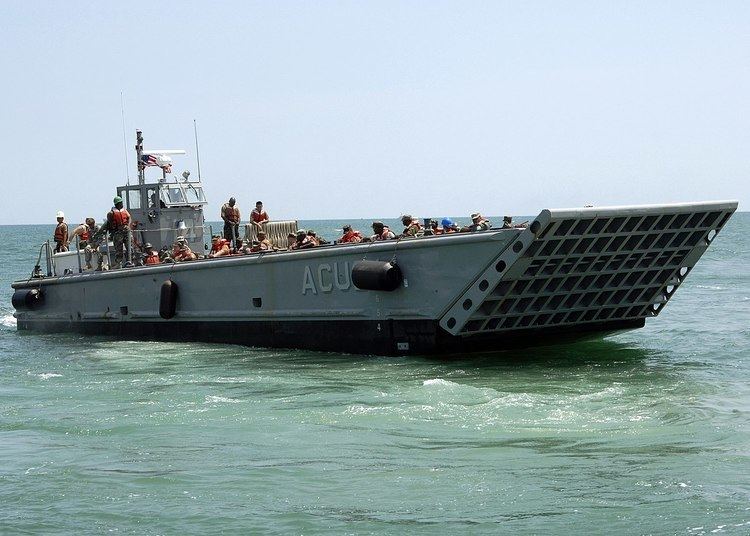 | ||
The landing craft mechanized (LCM) also landing craft mechanical is a landing craft designed for carrying vehicles. They came to prominence during the Second World War when they were used to land troops or tanks during Allied amphibious assaults.
Contents
Variants
There was no single design of LCM used, unlike the landing craft, vehicle, personnel (LCVP) or landing craft assault (LCA) landing craft made by the US and UK respectively. There were several different designs built by the UK and US and by different manufacturers.
The British motor landing craft was conceived and tested in the 1920s and was used from 1924 in exercises. It was the first purpose built tank landing craft. It was the progenitor of all subsequent LCM designs.
LCM (1)
The landing craft, mechanised Mark I was an early British model. It was able to be slung under the davits of a liner or on a cargo ship boom with the result that it was limited to a 16-ton tank.
The LCM Mark I was used during the Allied landings in Norway, and at Dieppe and some 600 were built.
LCM (2)
The first American LCM design, from the US Navy's Bureau of Construction and Repair. Approximately 150 were built by American Car & Foundry and Higgins Industries.
LCM (3)
There were two designs:
Capable of carrying 120,000 lb (54,000 kg) of cargo
In appearance very similar to the LCVP which Higgins Industries also constructed, with a 10-foot (3.0 m) wide load area at the front and a small armoured (1/4 inch steel) wheelhouse on the aft decking over the engine room. A Higgins LCM-3 is on display at the Battleship Cove maritime museum in Fall River, Massachusetts.
LCM (4)
In the years 1943 and 1944, seventy-seven LCM(4)s were built. Outwardly, the LCM(4) was almost completely identical to a late model LCM(1) - the difference lay inside the pontoon. Here special bilge pumps and special ballast tanks allowed the LCM(4) to alter trim to increase stability when partially loaded.
LCM (5)
British model of LCM
LCM (6)
An LCM (3) extended by 6 feet (1.8 m) amidships. Many were later adapted as armoured troop carriers (ATCs or "Tangos") for the Mobile Riverine Force in the Vietnam War; others became "Zippos" with flamethrowers, "Monitors" with 105mm guns or "Charlie" command variants.
LCM (7)
British model of LCM
LCM (8)
General characteristics, LCM 8 Type
